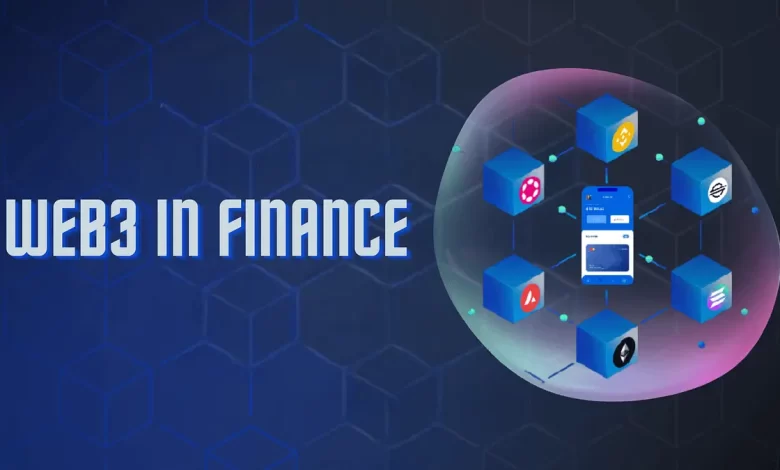Web3 Finance: Embracing Decentralization and Trustless Transactions

The world of finance is undergoing a significant transformation with the advent of Web3 technology. Web3 finance, also known as decentralized finance (DeFi), represents a paradigm shift in how financial systems operate. By leveraging blockchain technology and smart contracts, Web3 finance aims to eliminate intermediaries, increase security, and empower individuals in their financial interactions. In this article, we will explore the concept of Web 3 finance, its benefits, key components, challenges, future prospects, and its potential impact on the global economy.
Understanding Web3 Finance
Web3 finance is a revolutionary concept that leverages blockchain technology to provide decentralized, transparent, and trustless financial solutions. Unlike traditional finance, which relies on centralized authorities such as banks or governments, Web 3 finance operates on a peer-to-peer network, where transactions are verified and recorded on a public ledger called the blockchain.
Benefits of Web3 Finance
Increased Security and Transparency
One of the primary advantages of Web3 finance is enhanced security and transparency. Transactions conducted on the blockchain are cryptographically secured and cannot be altered or tampered with. The transparent nature of the blockchain also allows anyone to verify transactions and ensure their integrity. This eliminates the need for trust in intermediaries and reduces the risk of fraud or manipulation.
Elimination of Intermediaries
Web3 finance aims to eliminate intermediaries such as banks or financial institutions, which often impose high fees and create barriers to entry. With Web 3 finance, individuals can directly interact with the financial system, lending or borrowing funds, trading assets, or participating in other financial activities without the need for intermediaries. This disintermediation not only reduces costs but also promotes financial inclusivity.
Empowering Individuals
Web3 finance empowers individuals by giving them full control over their financial assets and data. Through the use of self-executing smart contracts, individuals can automate financial agreements and transactions, eliminating the need for intermediaries. This level of control and autonomy over one’s finances is a significant shift from the traditional centralized model.
Key Components of Web3 Finance
Blockchain Technology
At the core of Web 3 finance is blockchain technology. Blockchain is a decentralized and distributed ledger that records transactions across multiple computers or nodes. It ensures transparency, immutability, and security by creating a chain of blocks containing transactional data. This technology forms the foundation of Web3 finance, enabling secure and transparent financial interactions.
Smart Contracts
Smart contracts are self-executing contracts with predefined rules and conditions written on the blockchain. They automatically enforce the terms of an agreement without the need for intermediaries. Smart contracts enable the automation of financial transactions, such as lending, borrowing, or trading, in a trustless and efficient manner. They play a crucial role in Web3 finance by eliminating the need for intermediaries and ensuring the execution of agreements without human intervention.
Decentralized Finance (DeFi) Applications
Decentralized finance (DeFi) applications are financial applications built on blockchain platforms that enable various financial services, including lending, borrowing, trading, and investment. These applications operate without intermediaries and allow individuals to interact with financial services directly. DeFi applications leverage blockchain and smart contracts to provide transparent, efficient, and permissionless financial services to users worldwide.
Challenges and Risks in Web3 Finance
While Web 3 finance presents numerous opportunities, it also faces several challenges and risks that need to be addressed for widespread adoption.
Regulatory Uncertainty
The regulatory landscape surrounding Web 3 finance is still evolving. Governments and regulatory bodies are grappling with understanding and formulating appropriate regulations for this emerging technology. Regulatory uncertainty can create barriers to entry and hinder the growth of Web3 finance. However, efforts are being made to establish regulatory frameworks that balance innovation and consumer protection.
Scalability Issues
Scalability is a critical challenge for Web 3 finance. As more users and transactions enter the network, blockchain platforms face scalability issues due to limited processing power and network congestion. Scaling solutions such as layer 2 protocols and sharding are being developed to address these challenges and enable Web3 finance to handle a large volume of transactions.
Smart Contract Vulnerabilities
Smart contracts, while secure in theory, are not immune to vulnerabilities. Coding errors or malicious intent can result in vulnerabilities that can be exploited by bad actors. The community is actively working on improving smart contract security through code audits, formal verification, and bug bounties to minimize such risks.
Future Prospects of Web3 Finance
The future of Web3 finance is promising, with several potential outcomes that could reshape the global financial landscape.
Mainstream Adoption
As Web 3 finance matures and addresses its challenges, it has the potential to achieve mainstream adoption. The benefits of increased security, transparency, and financial inclusivity can attract individuals, businesses, and institutions to embrace Web3 finance as a viable alternative to traditional financial systems.
Disrupting Traditional Financial Systems
Web3 finance has the potential to disrupt traditional financial systems by offering more efficient, accessible, and cost-effective solutions. As decentralized applications gain traction and provide innovative financial services, the role of traditional banks and intermediaries may diminish. This disruption could lead to a more democratized and inclusive financial ecosystem.
Potential Impact on the Global Economy
The widespread adoption of Web 3 finance could have a profound impact on the global economy. By providing financial services to the unbanked or underbanked populations, Web3 finance can drive financial inclusion and economic growth. Additionally, the increased efficiency and transparency of financial transactions could reduce corruption and enhance economic stability.
Conclusion
Web3 finance represents a paradigm shift in the way financial systems operate. By embracing decentralization, trustless transactions, and innovative technologies such as blockchain and smart contracts, Web 3 finance offers enhanced security, transparency, and financial inclusivity. While challenges and risks exist, the future prospects of Web 3 finance are promising. As this technology continues to evolve and overcome hurdles, it has the potential to reshape the global financial landscape and empower individuals worldwide.




